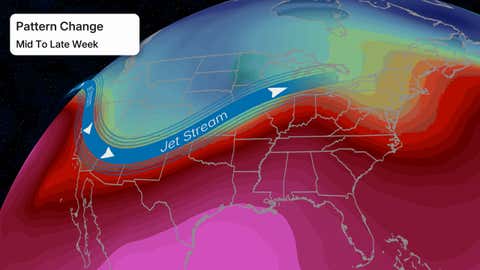Staying Safe During Severe Weather: What You Need To Know
Staying informed about the latest weather updates is crucial, especially as severe weather becomes more frequent during spring and summer. From thunderstorms to possible tornadoes, different weather patterns can affect communities across the United States. In this article, learn about severe weather risks, preparation strategies, and where to find reliable updates so you and your family can stay safe.

Understanding Weather Risks
Severe weather can bring multiple hazards, including high winds, hail, and even tornadoes. Meteorologists monitor patterns in the Plains and Midwest, regions that often face heightened weather threats during this time of year. According to Weather.com’s detailed outlook, an active pattern is developing. Forecasts suggest the risk of damaging thunderstorms, tornadoes, and large hail will increase over the coming days, especially from the Dakotas through Nebraska and into the Midwest.
When Severe Weather Hits
Knowing when severe weather is most likely to occur can help you prepare. For instance, a WZZM13 News update highlights that severe thunderstorms are possible when a cold front moves into a warm, humid air mass. Thunderstorms often develop in the late afternoon or evening. The risks linger into nighttime hours, so it’s wise to stay alert and track local forecasts and warnings.
How To Prepare For Severe Weather
Preparation is the key to weather safety. Here are a few practical steps:
- Stay Informed: Have multiple ways to receive weather alerts—TV, smartphone apps, or a NOAA weather radio.
- Know Your Shelter Locations: Identify safe spaces at home, work, and school where you can quickly take cover.
- Create an Emergency Kit: Include water, non-perishable food, a flashlight, batteries, and any necessary medications.
- Practice Your Plan: Make sure everyone in your household knows what to do when severe weather is approaching.
For more on preparing for severe storms and tornadoes, consult trusted resources and local meteorologists who track changing weather patterns in your region.
What To Do During an Outbreak
During active storms or tornado warnings, follow these safety guidelines:
- Move to an interior room or basement. Stay away from windows.
- Monitor official weather announcements for updates. Situations can develop fast.
- Do not attempt to drive through flooded areas or severe storm zones.
Following these guidelines helps reduce risk during unpredictable weather events.
Stay Updated and Weather Aware
Weather changes rapidly, especially during severe storm seasons. Prioritize your safety by monitoring forecasts from reliable channels. For in-depth updates, check the latest severe weather advisories from Weather.com or keep up with real-time coverage from teams like WZZM13’s Weather Impact Team.
Conclusion
Severe weather can pose sudden challenges, but preparedness and vigilance go a long way. Use up-to-date information and practical plans to protect yourself, your family, and your home. Stay proactive, and remember that being weather aware is a daily habit that can keep you safe all season long.